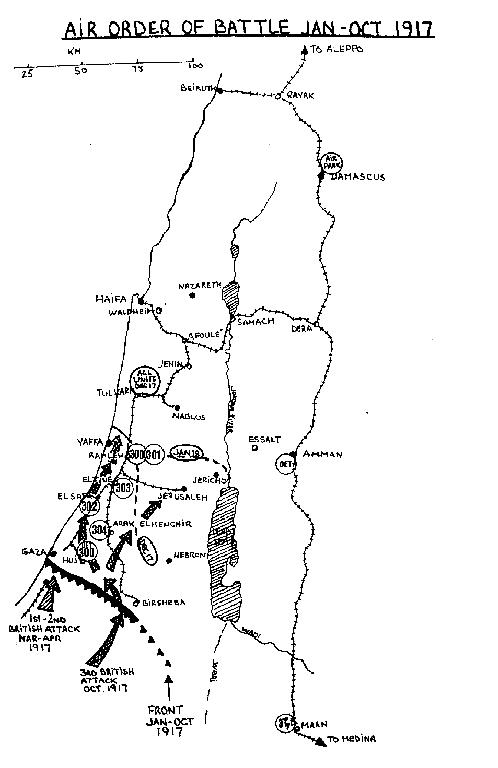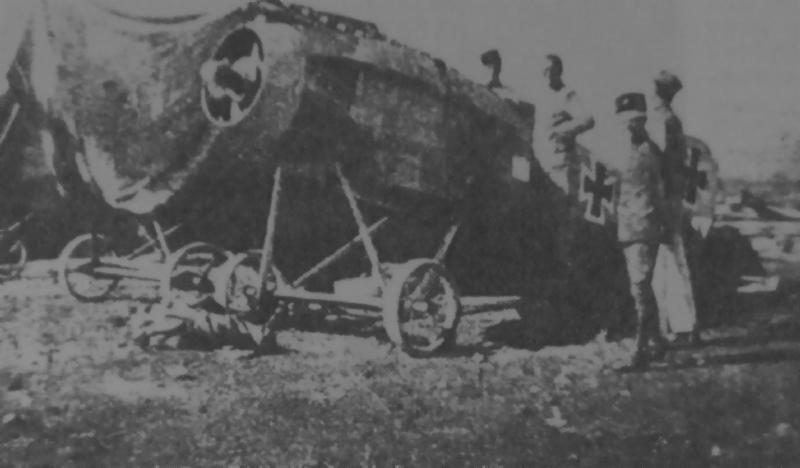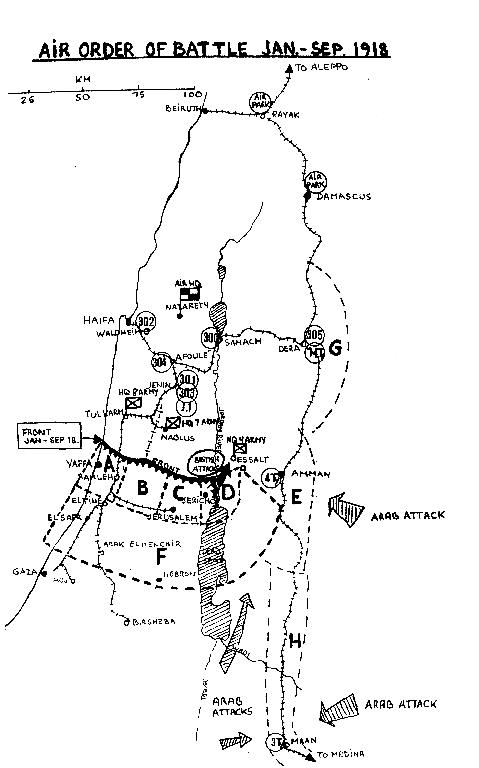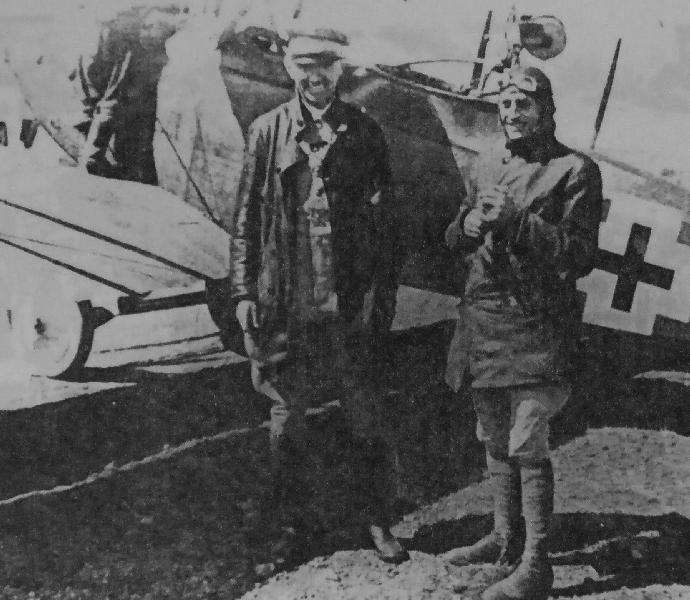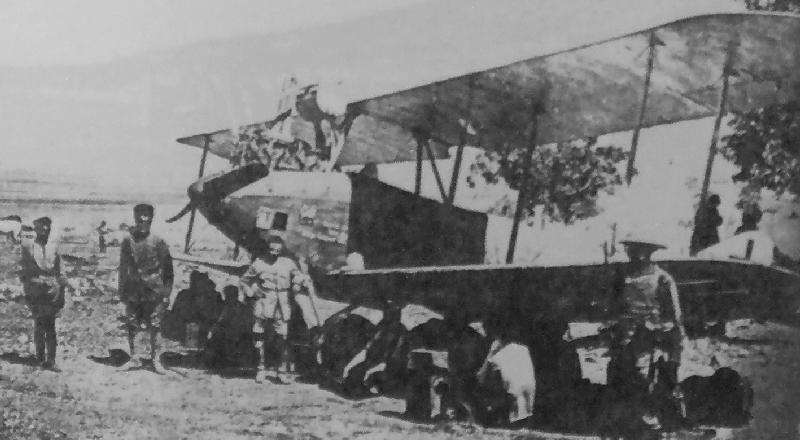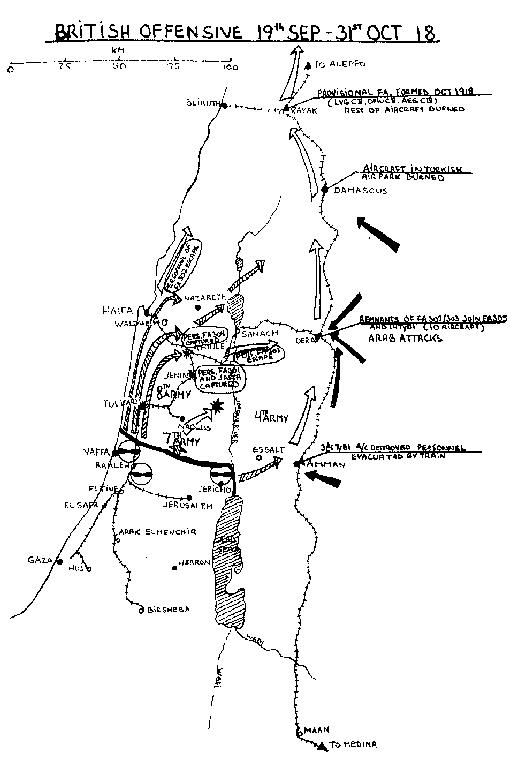Topic: Tk - Bks - Air Force
Pasha and Yildirim, the Palestine Front, 1915 to 1918

[From: Ole Nikolajsen, Ottoman Aviation 1911 - 1919, p. 204.]
By March 1917 the British forces moving through the Sinai desert had pushed forward the supporting railway line and moved enough forces and equipment forward to attempt an attack on the Turkish defence line between Beersheba and Gaza. These moves by the British forces were carefully observed and reported by the highly spirited and efficient crews of FA300, who had just arrived from Germany. A forward detachment of 2 Rumpler C.Is were maintained at Huj in close contact with the forward Army Headquarters so no time would be lost in forwarding new observations. To counter the British intentions, three Turkish divisions (the 3rd, 16th and 53rd) were rushed to the front.
When the British forces attacked in the early morning of the 26th of March 1917 the advance was dutifully reported by a Rumpler, flying low in the morning haze. While the 3 Turkish divisions hurried marched forward 6 Rumplers provided accurate artillery observations and attacked any British aircraft. Several air-battles ensued but neither side claimed any aircraft shot down. The British air units could call upon 21 BE2C's, 14 Martinsydes and 7 Bristol Scouts half of which were air worthy whereas FA300 possessed only 7 flyable Rumplers. The 2 Fokker E.III's being on charge were kept at Ramleh as the unreliable rotary engines made them unsuitable except for short flights over friendly territory. In the evening of the day of attack the British forces had to withdraw with more than 4,000 casualties. The war in the air continued for another 2 days.
After this battle the German commander of the front, General von Kress, officially gave credit to FA300 for having won the day [181] due to its timely and accurate observations and later artillery directions.
Meanwhile in the air the new Rumpler C.I's with their forward firing gun dominated the skies so effectively that they were widely reported by the Royal Flying Corps as "new Halberstadt fighters". Despite the fact that the Rumplers had orders to avoid battle to save precious machines for the vital reconnaissance duties, one BE.2C was downed on the 27th of March, another on 6 April and a Martinsyde on 19 April.
Map of air activities covered by this extract
[From: Ole Nikolajsen, Ottoman Aviation 1911 - 1919, p. 182.]
[Click on map for larger version.]
During the crucial period from mid March to mid April FA300 succeeded in almost completely keeping the British aircraft away from the Gaza lines while these were heavily fortified. In the process 210 flying hours were logged. In the first days of April keen aerial reconnaissance again revealed that a new attack on Gaza was eminent. Consequently two attacks by a force of 5 Rumplers were made on the main British airfield at Rafa inflicting heavy damage.
On 19 April, a British head-on attack was launched upon the by now well prepared Gaza lines. The assault was headed by a small force of armoured cars and therefore succeeded in penetrating the first lines. Now again excellent artillery direction by the wireless equipped Rumplers halted the attackers, wrecked the armoured cars and turned the assault into a complete failure.
On the day of attack an unorthodox attempt was made to stop the British advance by Captain Felmy (the Commanding Officer) and his observer Captain Falke. The British forces were dependent for their water supply on a pipeline following the railway track having been constructed through the desert. The two officers in a daring flight flew a Rumpler 150 km's behind the British lines, landed beside the railway track and blew up the pipeline with explosives. The damage was soon repaired but another similar attack made on 24 May was more successful.
Both on 20 and 21 April, the British tried to renew their attack but all attempts were quickly spotted by the “all present” Rumplers and dealt with by artillery or stubborn infantry counterattacks. The lines of Gaza remained unbroken despite the sacrifice of 6,444 British casualties. A Turkish follow-up counterattack failed to gain ground and was repulsed.
The British air units by this time were apparent completely demoralized and from May to September the small German unit, FA300 swept the sky around Gaza clear of enemy aircraft. The British airfields were also attacked at will and the railway track [183] bombed to such an extent that the traffic for long periods of time came to a standstill as the Indian and Egyptian workers refused to work.
During these five months of stalemate on the ground and German
air superiority, 7 more British aircraft fell to the Rumplers, the losses occurring on 11 May, 25 June, 26 June, 29 June, 8 July, 8 July and 13 September. After 20 June, when two Albatros D.III's were received, these fighters claimed a further 5 aircraft on 25 June, 26 June, 29 June, 8 July and 13 July. These successes were accomplished without any combat losses to FA300. Despite this fact the unit was in August down to only 2 airworthy Rumplers and the 2 Albatros fighters due to attrition and worn out aircraft.
Parallel to this far reaching changes had been made on the British side of the front where General Allenby had taken charge. New modern and more suitable British aircraft started to arrive at the front in August in large numbers.
Source: The above extract is obtained from a self published work by Ole Nikolajsen called Ottoman Aviation 1911 - 1919. The First and Second Battles Of Gaza comes from Chapter 8, Pasha and Yildirim, the Palestine Front, 1915 to 1918, pp. 181-4. The text has been edited to remove errors and make it readable for an English speaking audience.
Further Reading:
Air War on the Palestine Front, December 1915 to January 1917
Turkish Units - The Ottoman Air Force
Lieutenant Colonel Hüseyin Hüsnü Emir, Yildirim
Go To:
Previous Chapter: 3ncu Tayyare Boluk (The 3rd Aircraft Company)
Next Chapter: Yildirim Ordu (The "Lightning Army")
Citation: The First and Second Battles Of Gaza



